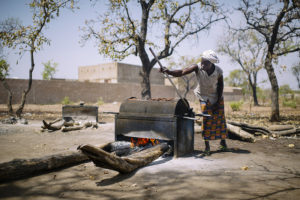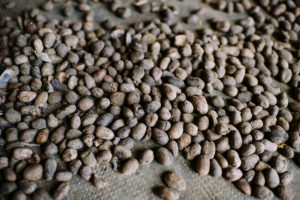
Tenure rights to trees are entangled with, but different from, those to land, meaning both must be acknowledged to incentivize stewardship of the landscape by local communities, said delegates at the Global Landscapes Forum (GLF) in Nairobi on Aug. 29-30.
Thus, land tenure rights, which are widely recognized as being central to advancing sustainable development goals, are only one part of the picture.
This was one of the main takeaways from the panel Rights, access, and values: trees in shifting economic and political contexts – new insights from sub-Saharan Africa, cohosted by the CGIAR Research Program on Forests, Trees and Agroforestry (FTA) and the CGIAR Research Program on People, Institutions and Markets (PIM) at the forum. The panel was chaired by Frank Place, PIM Director.
“We need to do more work to differentiate tree tenure from land tenure,” said Andrew Wardell, senior research associate at the Center for International Forest Research (CIFOR) and coauthor of a study exploring shifts in shea tenure in Burkina Faso.
ACCESS TO SHEA
Claiming tenure over the trees one has planted is a widespread convention across Africa, but shea trees grow wild, so farmers have historically selected and protected them on their lands.
Researchers questioned whether a shea tree belongs to the family that first selected and saved the tree, the family that protected and managed it afterwards. Considerations also included determining whether shea belongs to the wild tree category, in which case, access to the tree is closely linked to access to land.
How these concerns are addressed determines who stands to gain access to, and reap benefits from, a natural resource. Particularly, since customary institutions that formerly regulated access to land and trees are being weakened by new, and rapidly-changing social and economic contexts.

“Internal migration driven by climate change, and a boom in the shea trade are two of the key issues playing out in Burkina Faso as a key shea producer country,” explained Wardell. Traditionally, the kernels were seen as an abundant communal resource, which women collected to derive a reliable year-round source of income.
Yet, customary rules are now failing to keep pace with the new, highly competitive context, noted Wardell. In southwestern Burkina Faso, men increasingly claim ownership of the trees growing in their fields; there are fewer communal areas where access to shea is open to all; and access to an increasingly scarce and marketable resource is pitting first-settlers against new-comers, internal migrants that flee desertification in northern regions of the country.
Researchers observed that “first-comers” try to link access to shea with access to land, which they control. In response, “late-comers” claim access to the trees they protect and manage, or argue shea’s wild nature makes it a communal resource as part of their strategies to re-negotiate their rights of access.
NEW POWER RELATIONSHIPS
Women’s access to trees is also changing in Uganda. “Youth are cutting shea to obtain timber and fuelwood regardless of customary rules and a government ban,” said Concepta Mukasa, representative of the Association of Uganda Professional Women in Agriculture and the Environment.
“The more marketable shea becomes, the bigger the threat to the trees and to women’s livelihoods, so we are helping them come together to advocate for their access rights,” Mukasa explained.
On the bright side, women from the Baganda community in central Uganda are now starting to gain access to Natal fig or “Mutuba” (Ficus natalensis). “The tree used to signal chief-tenancy, so they were not allowed from to plant it or even harvest its fruits; women in that area are not supposed to climb trees,” she pointed out.
Panelists from Ghana (Alberg Katako representing Civic Response) and Kenya (Ben Chikamai representing the Network for Natural Gums and Resins in Africa) echoed similar challenges at the intersection of tenure rights to land and to trees – a tension which increases with the commoditization of natural resources and population pressure. Additional welcome comments on the panel discussion were provided by Ruth Meinzen-Dick from PIM who has a long history of working on land tenure rights and collective action.
Over 70 percent of people in sub-Saharan Africa depend on forests and woodlands for their livelihoods, but two thirds of the continental land-mass are degraded. In this context, a more nuanced approach to tenure rights will have to be part of the equation to build resilient landscapes and livelihoods, agreed the panelists.
By Gloria Palleres, originally published at GLF’s Landscape News.











